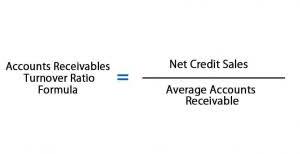
These are the note’s principal, maturity date, duration, interest rate, and maturity value. A note receivable is a promissory note made by a maker to a payee promising to repay a specified amount at a future time. For note receivable, the timeframe is before or on which the maker must reimburse the holder.
Are the Accounts Receivable Current or Non-assets?
When a note receivable is considered impaired, the company must recognize an impairment loss, which reflects a decline in the anticipated cash flows from the note. Impairment may occur due to a variety of factors, such as the borrower’s deteriorating financial condition, which casts doubt on their ability to make payments. The assessment of impairment is a judgment call that requires significant estimation and consideration of current economic conditions.
Is the discount on note receivable a current asset?
Assume that Local Retailer borrows $20,000 from its bank and signs a promissory note due in six months. Local Retailer records $20,000 as a credit to its current liability account Notes Payable (and debits its Cash account). Another opportunity for a company to issue a notes receivable is when one business tries to acquire another. Read this article on the terms of sale and the role of the notes receivable in the MMA/Hunt Acquisition to learn more. The difference between a short-term note and a long-term note is the length of time to maturity.
Unit 10: Receivables
NetSuite has packaged the experience gained from tens of thousands of worldwide deployments over two decades into a set of leading practices that pave a clear path to success and are proven to deliver rapid business value. With NetSuite, you go live in a predictable timeframe — smart, stepped implementations begin with sales and span the entire customer lifecycle, so there’s continuity from sales to services to support. Essentially, in all these situations, the company that owns the receivable either sells it to the bank (or another lender) or borrows against it to obtain immediate cash. Subsequently, if the accounts receivable prove uncollectible, the amount should be written off against the Allowances account. In any event, the Notes Receivable account is at the face, or principal, of the note. No interest income is recorded at the date of the issue because no interest has yet been earned.
- On January 1, 2018, Waterways purchased merchandise in the amount of $250,000.
- This will be illustrated when non-interest-bearing long-term notes receivable are discussed later in this chapter.
- If it is still unable to collect, the company may consider selling the receivable to a collection agency.
- Since its founding in 2009 and the launch of its first app in 2010, Square has found its way into many small businesses – and large businesses.
- The individual or business that signs the note is referred to as the maker of the note.
- This means that the company discounting the note, known as the endorser, guarantees the eventual full payment of its maturity value.
- Accounts Receivable is debited for the full maturity value, including the principal and unpaid interest.
Example of Journal Entries for Notes Receivable
The liquidity of notes receivable is also influenced by their negotiability. If notes are easily transferable or can be used as collateral for financing, they enhance a company’s liquidity position. In contrast, notes with restrictive covenants or those tied to complex transactions may be less liquid. Understanding these nuances helps stakeholders assess the company’s liquidity risk and informs their investment or lending decisions. Let us understand the advantages and disadvantages of a notes receivable account through the discussion below.
Which of these is most important for your financial advisor to have?
Note receivable from ABC LLC carried 5% simple interest rate payable annually while the one from DEF Inc. carried 8% interest compounded monthly. The accounting treatment of interest that is accrued but remains unpaid up to balance sheet date, depends on whether the interest is compound or simple. If it is a compound interest, the accrued interest that remains unpaid is added to the principal of note receivable and carried over to the next accounting period.

In march 2023, in their financial declaration, they had mentioned a sale with a company called MexMar for $28.8 million in July 2022. Interest on a Note Receivable is calculated based on the agreed-upon interest rate and the outstanding principal amount. The note presents all terms and conditions transparently to remove any possible misunderstandings between the parties in the future. The articles and research support materials available on this site are educational and are not intended to be investment or tax advice.
- The interest promised in the note is reported as interest expense by the borrower, and as interest income by the lender.
- Notes arising from loans usually identify collateral security in the form of assets of the borrower that the lender can seize if the note is not paid at the maturity date.
- The amount debited to interest receivable represent simple interest earned on note receivable from ABC.
- For this reason, notes are negotiable instruments the same as cheques and bank drafts.
- You are the owner of a retail health food store and have several large companies with whom you do business.
- Most often, they come about when a customer needs more time to pay for a sale than the standard billing terms.
Notes receivable can arise due to loans, advances to employees, or from higher-risk customers who need to extend the payment period of an outstanding account receivable. Notes can also be used for sales of property, plant, and equipment or for exchanges of long-term assets. Notes arising from loans usually identify collateral security in the form of assets of the borrower that the lender can seize if the note is not paid at the maturity date. An asset representing the right to receive the principal amount contained in a written promissory note. Principal that is to be received within one year of the balance sheet date is reported as a current asset. Any portion of the notes receivable that is not due within one year of the balance sheet date is reported as a long term asset.


Interest Receivable decreasing (credit) reflects the 2018 interest owed from the customer that is paid to the company at the end of 2019. The second possibility is one entry recognizing principal and interest collection. Note that the interest component decreases for each of the scenarios even though the total cash repaid is $5,000 in each case. In scenario https://www.bookstime.com/ 1, the principal is not reduced until maturity and interest would accrue over the full five years of the note. For scenario 2, the principal is being reduced on an annual basis, but the payment is not made until the end of each year. For scenario 3, there is an immediate reduction of principal due to the first payment of $1,000 upon issuance of the note.
On January 1, 2018, Waterways purchased merchandise in the amount of $250,000. BWW agreed to lend the $250,000 purchase cost (sales price) to Waterways under the following conditions. The conditions of the note are that the principal amount is $250,000, the maturity date on the note is 24 months, and the annual interest rate is 12%. Notes receivable have several defining characteristics that include principal, length of contract terms, and interest. The principal of a note is the initial loan amount, not including interest, requested by the customer.
